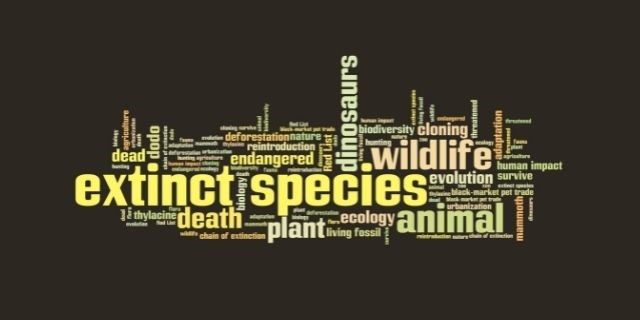05
Apr
Health Implications: Common Herbicide 2,4-D Threatens Most Species Health, Especially Vertebrates

(Beyond Pesticides, April 5, 2022) A meta-analysis by the Federal University of Technology – Paraná finds the herbicide 2,4-D causes indiscriminate harm, increasing the mortality rate among exposed animals. The severity of chemical exposure relies on species sensitivity, exposure rate, and lifecycle stage. However, commercial formulations of 2,4-D, commonly used in the environment, prompt a higher species mortality rate than technical (pure) 2,4-D alone. Like many other common herbicides such as glyphosate, 2,4-D has global uses that allow the chemical to accumulate in the environment, including soils, waterways, and tissues of non-target species. Therefore, meta-analyses like this help local and government officials make holistic decisions regarding environmental contaminants that incorporate conclusions from various studies.
Using the Web of Science and Scopus databases, researchers compiled various studies (or meta-analyses) on the lethality of 2,4-D in different animal species (e.g., vertebrates, invertebrates). Researchers evaluated each study regarding the mortality rate of control and experimental groups, animal sensitivity to chemical exposure during a specific life stage, chemical formulation (e.g., commercial or technical), and exposure routes causing mortality. The analysis demonstrates that vertebrates experience higher mortality rates from 2,4-D exposure, with fish and birds presenting the highest mortality rate. Regarding life stages, larval and adult animals exposed to 2,4-D are more susceptible to development/behavior changes resulting in mortality. Although oral and dermal (skin) chemical exposure negatively affects species’ health, exposure to 2,4-D from immersion in a contamination source (e.g., water) results in much more severe health outcomes.
Current research describes a range of unacceptable hazards from 2,4-D exposure, including the International Agency for Research on Cancer (IARC) finding that the chemical is a possible human carcinogen (e.g., soft tissue sarcoma and nonHodgkin lymphoma). Moreover, exposure to 2,4-D can cause neurotoxicities like the development of ALS and loss of smell, kidney/liver damage, and endocrine disruption. The U.S. Environmental Protection Agency (EPA) finds babies born near areas of high 2,4-D use, such as farming communities, have higher rates of birth abnormalities, respiratory and cardiovascular issues, and developmental defects. Although glyphosate replaced much 2,4-D herbicide use during the late 1990s early 2000s, increasing glyphosate resistance is shifting the market back to heavy 2,4-D use. However, 2,4-D has striking similarities to glyphosate with growing weed resistance to the chemical and its contribution to the growth of antibiotic resistance in human pathogenic bacteria. Scientists even noted 2,4-D’s similarities to glyphosate as the commercial formulation presented more severe health outcomes than the technical grade or pure chemical alone. Moreover, products containing both glyphosate and 2,4-D to combat growing herbicide resistance are becoming increasingly popular, as 2,4-D, like glyphosate, has become integral to genetically engineered crops. Considering the agricultural industry is now speeding toward multi-herbicide tolerant cropping systems, public and environmental health is a greater risk from chemical input threats from this cropping system.
This analysis is the first of its kind to evaluate 2,4-D’s mortality rate, rather than sublethal exposure rate, among various species. The difference in lethality between vertebrate and invertebrate species mainly stems from variances in life stages (e.g., larvae, adult) and exposure route (e.g., oral, dermal, immersion). Aquatic animals experience higher mortality rates from 2,4-D exposure as the chemical readily contaminates waterways (e.g., leaching and runoff). The commercial formula of 2,4-D has higher active substance absorption (water solubility), thus is highly soluble due to solvents in the formula increasing chemical mobility. Moreover, commercial 2,4-D decreases dissolved oxygen levels in waterways, causing asphyxia. Considering surfactants, solvents, and oils in the commercial formula can be lethal to various animal species, the combined impact of direct and indirect toxicity from exposure creates an environment that cannot sustain ecological development. Therefore, the chemical residues in waterways penetrate sensitive body parts like mucosal membranes and gills, especially in aquatic vertebrates (e.g., fish).
It is essential to understand the impacts of interactions with other environmental pollutants, especially in contaminated ecosystems like waterways. Beyond Pesticides has long advocated for federal regulation that considers potential synergistic and additive threats to ecosystems and organisms. Government and health officials must address chemical pollution before similar declines in human general health, fitness, and well-being. Furthermore, climate crisis implications like melting glaciers present a new concern over the levels of chemical concentrations in waterways from DDT, its metabolites, and other persistent organic pollutants trapped in ice. Toxic pesticide use must end to protect the nation’s and world’s waterways and reduce the number of pesticides that make their way into drinking water. Replacing pesticides with organic, non-toxic alternatives is crucial for safeguarding public health, particularly in communities vulnerable to pesticide toxicity. Learn more about the hazards pesticides pose to wildlife and what you can do by visiting Beyond Pesticides’ wildlife program page. For more information about pesticide contamination in water, see the Threatened Waters program page and Beyond Pesticides’ article Pesticides in My Drinking Water? Individual Precautionary Measures and Community Action.
All unattributed positions and opinions in this piece are those of Beyond Pesticides.
Source: Environmental Pollution











GET THIS SHIT OFF OF THE MARKET! we ARE SICK OF BEING POISONED!!!!!!!!!!!!!!
April 6th, 2022 at 5:29 pm